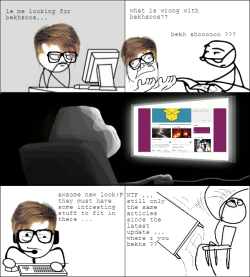Queers and their Online Spaces: a Research Project
651 viewsFor the past year, a team of researchers have been looking at the relationship between the internet and the queer rights movement in Lebanon. The team included queer and feminist activists, techies, and policy specialists. At both personal and political levels, the Internet has aided, allowed, scared, connected, and protected LGBTs in Lebanon and their demand for recognition and dignity since the late 90s. But what are the complexities of this relationship?
For many of us, that translates into simple things like the first time we searched for “homosexual” online or the people we meet through the #gaylebanon chatroom or adding a love interest to MSN to chat hoping that the chats will lead to a relationship. For activists, the Internet has been our strongest ally in delivering our messages to the world and also in building connections with LGBTs. Many of us found Helem through their Facebook group or have contributed our stories and opinions to Bekhsoos.com. We negotiate our “outness” online in most creative ways: limiting profiles, creating “gay” and “straight” profiles, posting some links but not others, choosing our social networks, etc.
But if we examine our relationship to the internet both historically and politically, we are left with many insightful lessons about the positioning and significance of our movement. It is evident that we have evolved – as an LGBT community – over the years from consumers and reproducers of information, identity, and each other online to producers of knowledge, connectors, and challengers of global gay discourses. The credit goes largely to us for allowing our movement to be self-reflective, open, and critical but this evolution is also in part facilitated by the rapid evolution of the Internet and its Information and Communication Technologies.
During this whole time of significant progression on the part of the queer movement, individuals and activists were operating under the advantage of an open Lebanese internet that censored nothing – as opposed to an offline Lebanese media control that censored everything sexual. In 2010 alone, however, online freedoms came under severe attacks with a problematic proposed ICT law e-transaction law, arrests based on Facebook statuses, and police harassment of bloggers. The question of communication rights in Lebanon – always controversial in the press and publications law – is now in the forefront of civil society issues because of its extension into the realm of the internet.
What does this all mean for the queer movement in Lebanon but also in the rest of the Arab world? How does it fit within regional and international political trends? The research paper tackles these questions and poses many more in an attempt to bridge communication rights and sexuality rights into a common debate. The challenges are many, top of the list being that while many Arabs agree that freedom of expression is crucial in communication rights, most will contend that it does not include the freedom of sexual or gender expression. Undertaking the research project, over the past year, however, has helped the team develop stronger understanding both of technological developments around censorship and privacy but also of our very own movement. The final research paper, which is focused on young queer women, will include a discussion of the emergence of queers from virtual spaces to physical public spaces then back to virtual spaces with a different mission. It touches upon the significance of uncensored self-expression, creation of narratives, and gender particularities. You can read a brief article that is based on the research on GenderIt.org and will be able to access the full study, which is part of a global project called ERoTICs this coming October.





Leave a Reply